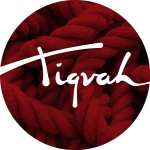Hope on Display
As I travel the hope journey, I contemplate the very familiar verse, “‘For I know the plans that I have for you,’ declares the Lord, ‘plans for welfare and not for calamity to give you a future and a hope.’” – Jeremiah 29:11 (NASB). I began reading that verse in the context of the chapter and realized it was saying something slightly different from what I’ve thought for a long time. Jeremiah is talking to the captives in (Babylon), and he told them that they were not going home anytime soon, no matter what the prophets there said. The land needs the rest from all the Sabbath years that they didn’t allow it to rest. Settle down, he said. Build houses, get married, have babies, bless the land where you are. They’ll go back, but not now. (Full Passage) Talk about hope deferred.
But then he relays what God says, about the plans He has for a future and a hope. In the face of exile, they were to look to hope – 70 years down the road. A hope in a land not their own, driven their by their disobedience and sin. What kind of hope does that look like? How do you hold on to hope in that situation? How do you hope in the face of a broken heart, crushed dreams, pain, despair – I could go on and on. What is the substance of that hope?
So of course, I looked it up. The Hebrew word from Strong’s is 8615, ‘tiqvah’, and it literally means cord, as an attachment. Figuratively, it means expectancy – expectation, expected, hope, live, thing that I live for. So this cord represents my hope – it’s something I can hang on to. I wonder if the phrase, “I’m at the end of my rope,” is rooted from there. Anyway, I went to look up where it was first used (law of first mention, and all that), and became undone.
Image from Tiqvah Counseling, Coaching and Education – https://tiqvahcce.com/
Tiqvah is used 34 times in various forms, and the first of which is in Joshua 2:18. This is the promise to Rahab to save her and her household from the destruction coming to her city of Jericho. The spies said, “…We [shall be] free from this oath to you which you have made us swear, unless, when we come into the land, you tie this cord of scarlet thread in the window through which you let us down, and gather to yourself into the house your father and your mother and your brothers and all your father’s household.” (Joshua 2:17-18, NAS). Her faith in a God she barely knew that made her help the spies turned an ordinary rope (Strong’s 2256) into a scarlet thread of HOPE. A hope of salvation from the emptiness and idolatry that surrounded her. A hope of life in the picture of death.
So she sent the spies away, and hung her hope out on display. It was a scarlet thread, not a quiet color, not a passive, fade in the background type of rope. This was easily seen by the spies when they came, easily seen by those who came and went. What was her explanation to those who asked? Was she ridiculed, admonished, discouraged, tempted to draw back her tiqvah?
We know how that story turned out. The spies saw her tiqvah on display, and fulfilled their promise and rescued her. It challenged me, though, about not only hanging on to my cord, my hope, but putting it on display as a sign, a testimony, a promise, a commitment. The Lord has given me a future and a tiqvah – how am I going to anchor it and display it, knowing that He will fulfill it? How will you?
Akpene is a whiz at organizing the chaotic and overwhelming clutter for start-ups and small business leaders by listening and identifying focus and strategies so we can define and implement forward direction for a sustaining and successful business.








Leave a Reply to Tanya Dorris Cancel reply